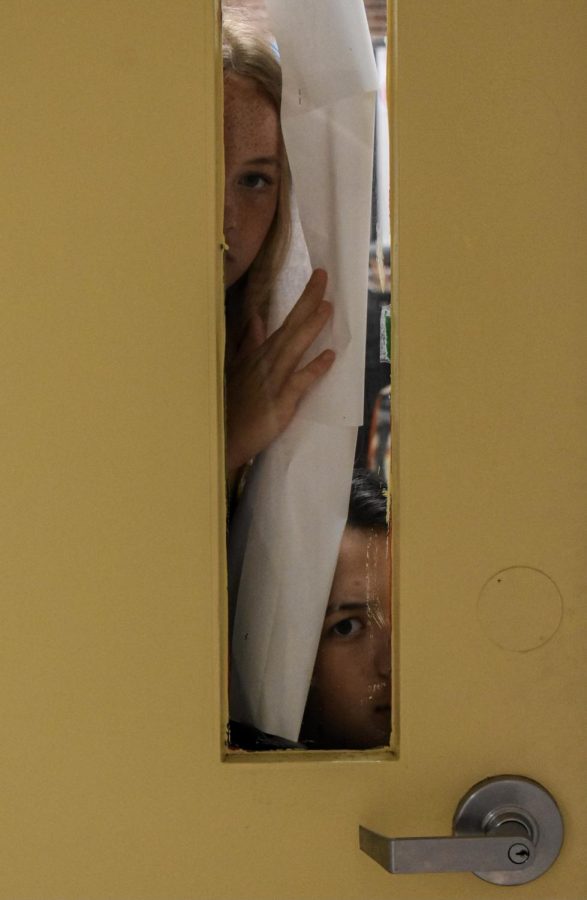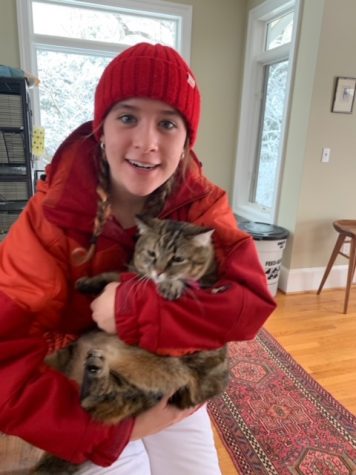Transparency, Communication, and Lock-downs
September 19, 2022
*Editor’s note:
This article was written before the lock down on Monday the 19th, some of the new policies were implemented in that lock down. After seeing these things put into action, student opinion is even more important, if you have thoughts or opinions on these new standards, please reach out to administration directly, a counselor, or Stella Gunn, the Editor in Chief of Knight Time Review: [email protected]
Although the past administration has firmly believed confidentiality around lock down’s is a measure of safety, in reality sheltering students from the truth often leads to more serious issues. For instance, Thursday September 1st, during 5th period, the intercom came on calling for a “shelter in place”. Many classrooms still had conversation going on, and others continued instruction. Cecilia Morrison, a student at C.H.S. said, “When we’re having to stay in the classroom and continue instruction, it creates so much paranoia for everyone, and it’s just so distracting I think.” Which, in the case of an intruder, could cause students to be heard and located. No other information was released, until around an hour later, when we were told it was “ all clear.” Many students received worried texts from parents, wondering if they should come pick up their children, as they also received no context to the situation until the end of the school day.
Our generation has been uniquely traumatized by a massive increase in exposure to adversity of all kinds. We witnessed the rise of social media, cyber-bullying, and phone addiction. We lived through a global pandemic that shut down the whole educational system for more than a year. We continue to experience a reality in which we must consider our safety everyday, even in the classroom. Since 1999, when the Columbine shooting first took place, there have been 304 fatal school shootings, according to security.org. This was a reality we were born into, and although that perspective is specific to younger generations, we have little say in how schools handle our safety.
With such a rise in violence, school systems continue to scramble to find solutions, but there is one place they don’t look, and that is student opinions and experiences. However, with a new principal at C.H.S., perhaps this could change. The lack of communication and understanding between students and adults limits the effectiveness of precautions and often lends more experiences of anxiety and trauma for students.
Lockdowns are not new to C.H.S. and its student body. In my four years at C.H.S. I have witnessed many drills, shelter in place, and lockdowns that have gone awry. The main breakdown resides in the area of transparency and communication. The students never have any tangible information about the situation at hand, and furthermore, in many situations neither do teachers or parents.
The universal truth is: students will talk. There is nothing that can stop theories from circulating, except explicitly explaining the true situation. Shortly after students were released from the shelter in place, more and more outlandish hypotheses spread throughout the halls. Below is the response of a group of students, who answered the question: What rumors did you hear?
“Um that two kids had guns.”
“Yeah and that there was ten cop cars.”
“Everyone had AKs.”
“My teachers kept saying it was about drugs.”
Experiencing an influx of terrifying explanations in no way makes someone feel safe, and without understanding what precautions were taken to address the situation, many find it nearly impossible to return to regular work. Previous administrations at our school believed we were not responsible enough to handle the truth. However, we understand the severity of these situations better than an adult ever could. We grew up with it.
One anonymous student shared his experience, “I had no idea what was going on, I had no information, my friends told me what happened that day, but other than that I knew nothing, […] I heard that there was a weapon in school, and I kinda freaked out about it, uh but that’s the only way I found out.” If the administration directly communicated the circumstance of any threat to safety we could all respond appropriately, but without any context, we have no reference for the choices that could save our lives. Confidentiality and issues of protecting anonymity arise, but it is not necessary to release the name of any suspects, only the severity and what actions have taken place.
Charlottesville High School is entering a new era of administration this year, with a new principal, the possibility of improvement in policy is more achievable than ever. Now, we look at the plans and opinions of Mr. Pitt, C.H.S. ‘s new principal. Mr. Pitt began our meeting by speaking on the type of environment he wants to create in our building.
“I think um, anytime you have an opportunity, given my experiences in life, and what educators have done for me, and experiencing trauma, just like every other kid did or any young adult, but realizing the importance of the school community and wrapping our arms around you and supporting you, and giving you that tough love and holding you accountable, but still remembering that… you know where you come from, and you know how your potential (and) seeing you making those incremental growths as a person.”
Understanding the issues of confidentiality around what takes place, are there legal restrictions for communicating the information to students ?
“Yes, there is a level of confidentiality we have to follow, especially regarding minors.”
I went on to express my concerns around the lack of communication, I also shared some quotes from students, with Mr. Pitt.
“What I hear you saying is after situations like that, you would like a student debriefing on what happened, that’s what I hear you saying.”
I nodded and continued to share quotes from students
“Duly noted, I will definitely… I don’t think I have an issue with doing that, and what we can probably do is when we have incidents like that, pause, do a school-wide video and just share details based on what happened. And then send also (to parents), so there is a student communication and parent communication, that seems very fair.”
I was incredibly impressed by Mr. Pitt’s willingness to listen and collaborate, and I urge students to continue to push for what they want to see in our school, and what will keep us safe. Mr. Pitt also commented that,
“ I don’t mind, I think that kinda removes the us vs them: teacher vs students, admin and teachers like we’re all, when I say family I mean it. And part of that family is we have to have hard conversations and sometimes you have to hear […] something from a student, that makes sense… and this makes sense. Based upon information, I can give a school wide message and follow up with a parent message. I think we missed a step, or didn’t even think about the student debriefing, so I think that’s spot on and I think that’s something we can implement.”
If our school can continue on this path of collaboration, we can truly achieve a safe learning environment for our whole community. The world has spent enough time wallowing in its issues. The time to take action is now, and every student and administrator must work to create the world they wish to see. A world in which we are supported, and no one ever feels the need to hurt others, in the ways they feel they have been hurt.






